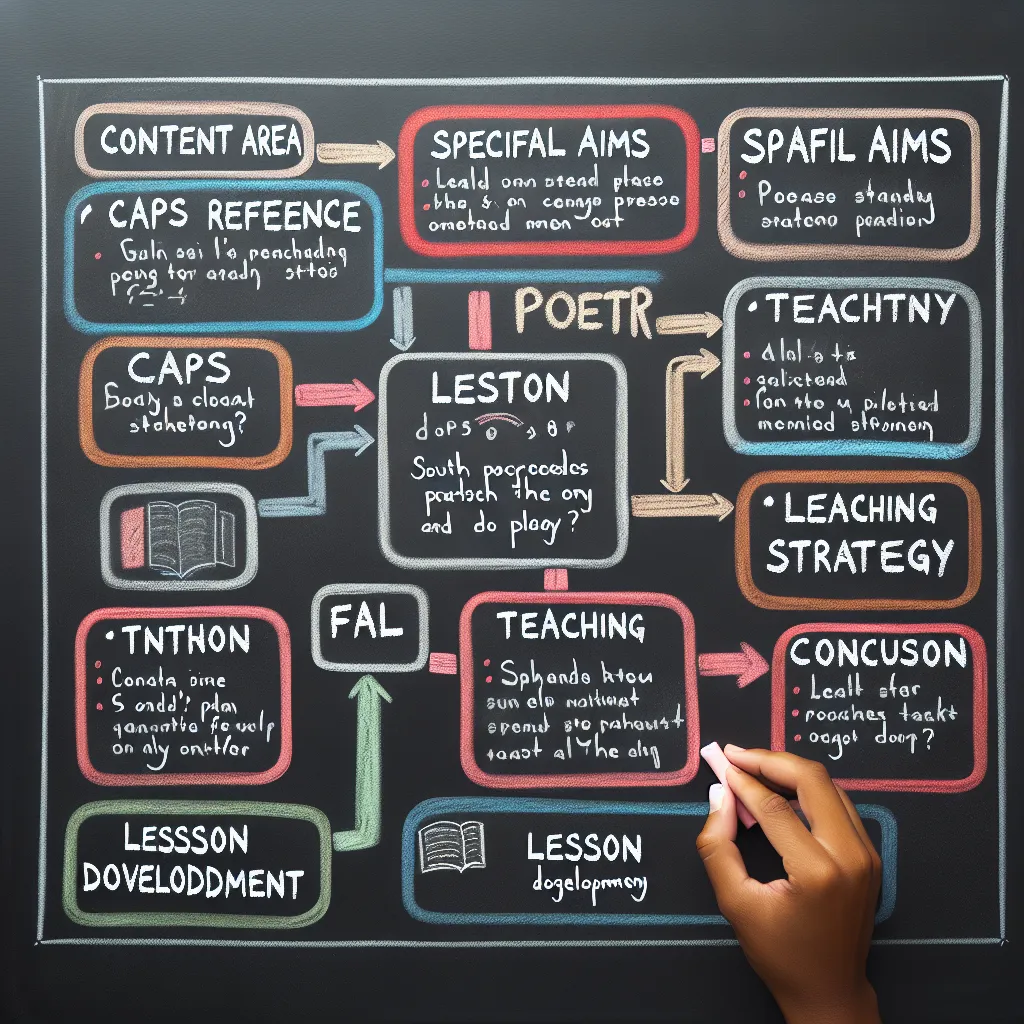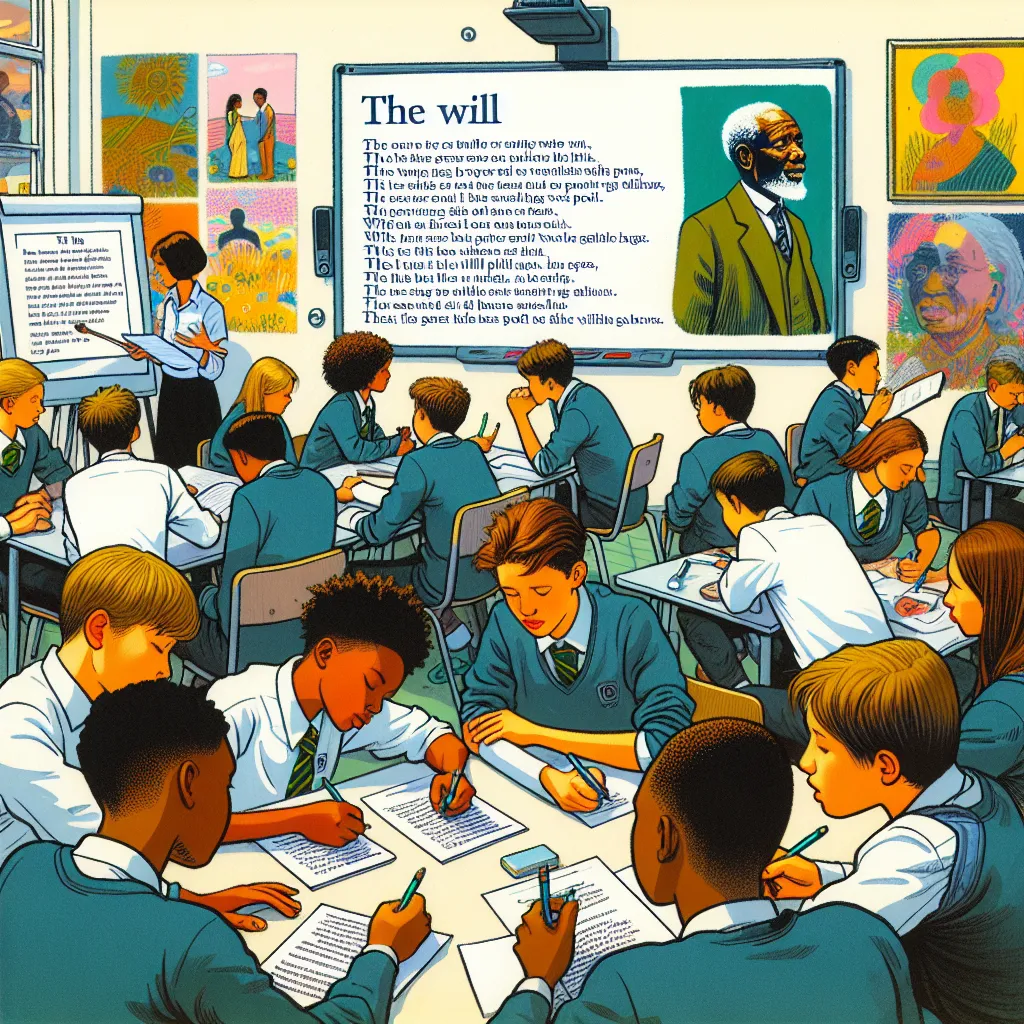Ask AI on The Internet
Question: Write a full South African English FAL grade 9 poetry lesson plan. The lesson plan should include the content area, caps page number, specific aims, lesson objectives (knowledge, skills and values/attitudes), the approach/teaching strategy, the introduction of the lesson, the development of the lesson and lastly the conclusion of the lesson
**South African English FAL Grade 9 Poetry Lesson Plan** **Content Area:** Poetry Analysis and Appreciation **CAPS Page Number:** Refer to the CAPS English First Additional Language Grades 7-9 document, particularly the sections on poetry (approximately pages 28-30). **Specific Aims:** 1. Develop learners' comprehension and analytical skills. 2. Foster an appreciation for poetic language and structure. 3. Enhance learners' ability to interpret and express ideas and emotions through poetry. **Lesson Objectives:** *Knowledge:* - Understand specific poetic devices (metaphor, simile, personification, rhyme, rhythm, alliteration). - Identify themes and tones in a poem. - Recognize the structure of a poem (stanza, line, rhyme scheme). *Skills:* - Analyze and interpret the meaning of a poem. - Discuss and share personal responses to the poem. - Compare and contrast different poetic works. - Write a brief poetic response. *Values/Attitudes:* - Appreciate the diversity and richness of poetry. - Cultivate a respectful attitude towards different interpretations. - Encourage a sense of curiosity and enjoyment in exploring poetic works. **Approach/Teaching Strategy:** - Interactive and learner-centered approach. - Incorporate group discussions, individual tasks, and class interactions. - Use of multimedia (audio recordings, videos) to enhance understanding. **Introduction of the Lesson: (10 minutes)** 1. **Greeting and Settling Down:** - Greet learners and ensure they are seated properly with their learning materials. - Briefly recapitulate the previous lesson to provide continuity. 2. **Hook/Engagement Activity:** - Play an audio recording or video of a well-known poem read aloud. - Ask learners to close their eyes and visualize the scenes or emotions evoked by the poem. 3. **Discussion Starter:** - After the recitation, prompt learners with a few open-ended questions: "How did the poem make you feel?", "Did any particular words or lines stand out to you?", "What images came to your mind?" **Development of the Lesson: (30 minutes)** 1. **Introducing Poetic Devices:** - Define and give examples of key poetic devices (metaphor, simile, personification, etc.). - Use a familiar and simple poem to highlight these devices. 2. **Group Activity:** - Divide students into small groups and give each group a different short poem. - Instruct them to identify and list the poetic devices used in their assigned poem. - Have each group share their findings with the class. 3. **Theme and Tone Exploration:** - Select a central poem for the day's lesson (e.g., "The Wind" by Christina Rossetti). - Read the poem aloud together as a class. - Discuss the themes and tone of the poem: "What is the poem about?", "What emotions does it convey?", "How does the poet use language to create these emotions?" 4. **Individual Analysis:** - Provide learners with a worksheet that includes a copy of the poem and specific questions about its meaning, structure, and use of poetic devices. - Give learners time to complete the worksheet individually. 5. **Class Discussion:** - Review the worksheet answers as a class. - Encourage learners to share their personal interpretations and responses to the poem. - Highlight that multiple interpretations are valid and can enrich understanding. **Conclusion of the Lesson: (10 minutes)** 1. **Consolidation:** - Summarize the key points discussed: poetic devices, theme, and tone. - Reiterate the value of interpreting and appreciating poetry. 2. **Extension Activity:** - Ask learners to write a short poem or a paragraph reflecting on a theme or emotion discussed in the lesson. - Suggest that they incorporate at least two poetic devices learned during the lesson. 3. **Closure:** - Thank learners for their participation. - Provide a preview of the next lesson's topic. - Offer additional resources or readings for interested learners to explore poetry further. **Assessment:** - Formative assessment through group activity participation, worksheet responses, and class discussion contributions. - Summative assessment through the extension activity (short poem or reflective paragraph). This lesson plan integrates various teaching strategies to engage learners, build their analytical skills, and foster an appreciation for poetry. It also provides opportunities for learners to express their interpretations and emotions creatively.
Think your answer is better than the AI's? Post it below.
Question Tags
If you want your question answered by an AI, click here.







Post your own comment: